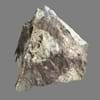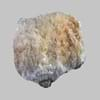Definition
It is a metamorphic magnesium rich rock because it is composed of the mineral talc
Coal is a combustible black or brownish-black sedimentary rock usually occurring in rock strata in layers called coal beds
Discoverer
Unknown
John Peter Salley
Etymology
From 17th century, because of its greasy feel and use like a soap
From the Old English term col, which has meant mineral of fossilized carbon since the 13th century
Class
Metamorphic Rocks
Sedimentary Rocks
Sub-Class
Durable Rock, Soft Rock
Durable Rock, Soft Rock
Group
Not Applicable
Not Applicable
Other Categories
Fine Grained Rock, Opaque Rock
Coarse Grained Rock, Fine Grained Rock, Medium Grained Rock, Opaque Rock
Texture
Polished
Amorphous, Glassy
Color
Black, Black to Grey, Green, Grey
Black, Brown, Dark Brown, Grey, Light to Dark Grey
Durability
Durable
Durable
Appearance
Dull, Banded and Foilated
Veined or Pebbled
Interior Uses
Bathrooms, Decorative Aggregates, Homes, Interior Decoration
Not Yet Used
Exterior Uses
As Facing Stone, Garden Decoration
Not Yet Used
Other Architectural Uses
Curbing
Not Yet Used
Construction Industry
Manufacture of Magnesium and Dolomite Refractories
Cement Manufacture, for Road Aggregate, Making natural cement, Steel Production
Medical Industry
Taken as a Supplement for Calcium or Magnesium
Not Yet Used
Antiquity Uses
Artifacts, Jewellery, Monuments, Sculpture
Artifacts
Commercial Uses
Cemetery Markers, Creating Artwork, Gemstone, Jewelry, Manufacture of Soap, Solvents, Dyes, Plastics and Fibres, Production of Lime, Source of Magnesia (MgO)
Alumina Refineries, Electricity Generation, Liquid Fuel, Manufacture of Soap, Solvents, Dyes, Plastics and Fibres, Paper Industry
Types
Not Available
Peat, Lignite, Sub-Bituminous Coal, Bituminous Coal, Anthracite, Graphite
Features
Host Rock for Lead
Helps in production of Heat and Electricity, Used as fossil fuel
Archaeological Significance
Monuments
Used
Not Yet Used
Famous Monuments
Christ the Redeemer in Rio de Janeiro, Stonehenge in English county of Wiltshire
Not Applicable
Sculpture
Used
Not Yet Used
Famous Sculptures
Data Not Available
Not Applicable
Pictographs
Used
Not Used
Petroglyphs
Used
Not Used
Figurines
Used
Not Yet Used
Formation
Soapstone is a talc-schist, which is a type of metamorphic rock and it is largely composed of the mineral talc and is thus rich inmagnesium.
Coal forms from the accumulation of plant debris in a swamp environment which is buried by sediments such as mud or sand and then compacted to form coal.
Mineral Content
Albite, Apatite, Biotite, Calcite, Carbonate, Clay Minerals, Hornblende, Ilmenite, Micas, Plagioclase, Pyroxene, Quartz
Analcime, Apatite, Barite, Calcite, Chalcopyrite, Chlorite, Chromite, Clausthalite, Clay Minerals, Crandallite Group, Dolomite, Feldspar, Galena, Gypsum, Marcasite, Muscovite or Illite, Pyrite, Quartz, Siderite, Sphalerite, Zircon
Compound Content
CaO, Mg, MgO
Carbon, Hydrogen, Nitrogen, Oxygen, Sulphur
Types of Metamorphism
Burial Metamorphism, Cataclastic Metamorphism, Contact Metamorphism, Hydrothermal Metamorphism, Impact Metamorphism, Regional Metamorphism
Burial Metamorphism, Cataclastic Metamorphism, Regional Metamorphism
Types of Weathering
Not Applicable
Not Applicable
Types of Erosion
Not Applicable
Not Applicable
Grain Size
Fine Grained
Medium to Fine Coarse Grained
Fracture
Conchoidal
Conchoidal
Porosity
Less Porous
Less Porous
Luster
Greasy
Dull to Vitreous to Submetallic
Compressive Strength
Not Available
Cleavage
Perfect
Non-Existent
Toughness
1
Not Available
Specific Gravity
2.86
1.1-1.4
Transparency
Opaque
Opaque
Density
2.8-2.9 g/cm3
1100-1400 g/cm3
Resistance
Heat Resistant, Pressure Resistant
Heat Resistant
Deposits in Eastern Continents
Asia
China, India, Indonesia, Japan, North Korea, Russia, Saudi Arabia, Singapore, South Korea, Sri Lanka, Tajikistan, Thailand
Bangladesh, Burma, Cambodia, China, India, Indonesia, Kazakhstan, Malaysia, Mongolia, Pakistan, Turkey, Vietnam
Africa
Egypt, Ethiopia, Ghana, South Africa, Western Africa
Botswana, Kenya, Morocco, Mozambique, South Africa, Tanzania
Europe
Austria, England, Finland, France, Germany, Greece, Spain, Sweden, Switzerland, United Kingdom
Belgium, Bulgaria, England, France, Germany, Greece, Hungary, Kosovo, Netherlands, Norway, Poland, Romania, Serbia, Slovakia, Slovenia, The Czech Republic, Ukraine, United Kingdom
Others
Not Yet Found
Not Yet Found
Deposits in Western Continents
North America
Canada, USA
Canada, Mexico, USA
South America
Colombia
Brazil, Chile, Colombia, Venezuela
Deposits in Oceania Continent
Australia
Central Australia, New Zealand, Queensland
New South Wales, Queensland, Victoria
All about Soapstone and Coal Properties
Know all about Soapstone and Coal properties here. All properties of rocks are important as they define the type of rock and its application. Soapstone belongs to Metamorphic Rocks while Coal belongs to Sedimentary Rocks.Texture of Soapstone is Polished whereas that of Coal is Amorphous, Glassy. Soapstone appears Dull, Banded and Foilated and Coal appears Veined or Pebbled. The luster of Soapstone is greasy while that of Coal is dull to vitreous to submetallic. Soapstone is available in black, black to grey, green, grey colors whereas Coal is available in black, brown, dark brown, grey, light to dark grey colors. The commercial uses of Soapstone are cemetery markers, creating artwork, gemstone, jewelry, manufacture of soap, solvents, dyes, plastics and fibres, production of lime, source of magnesia (mgo) and that of Coal are alumina refineries, electricity generation, liquid fuel, manufacture of soap, solvents, dyes, plastics and fibres, paper industry.









